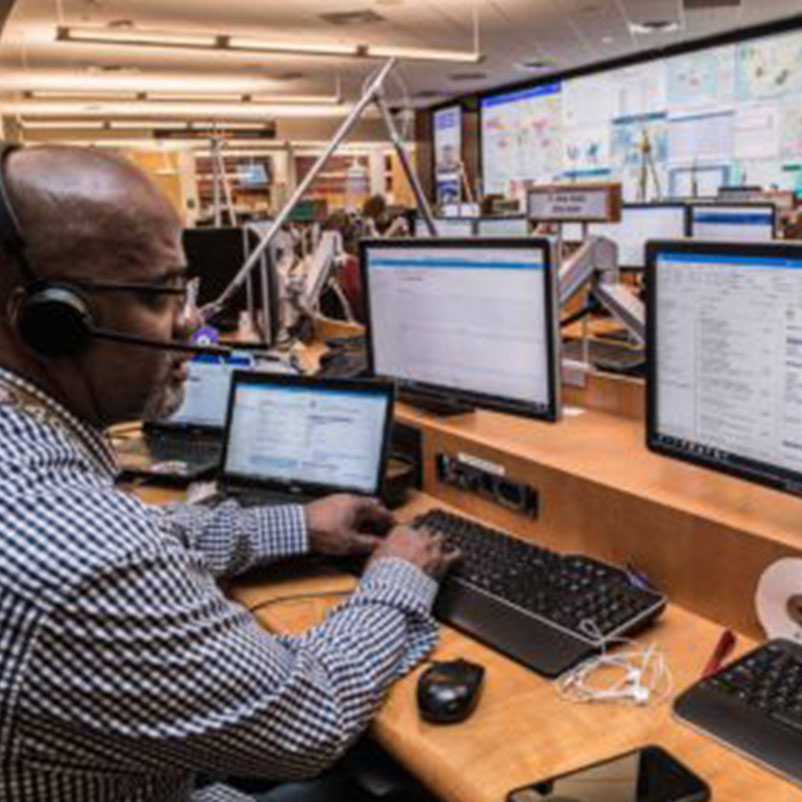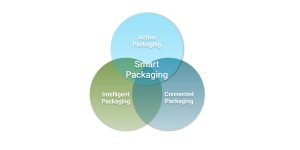We use smartphones, smart appliances, drive smart cars, and we increasingly eat food stored and transported in smart packages. What makes all those things “smart” though? Go ahead and replace “smart” with “internet connected” and you’ve more or less captured the meaning of it. Smart packaging connects products to the internet to enable new functions, not unlike how smart appliances take advantage of a connection to the internet to create interactivity. Smart packaging is a necessity for data collection from supply chains. This evolving technology category bridges the gap between physical goods and products and the realm of digital data on the internet. Practical applications for this include reporting on or improving product shelf life, reducing product damage during shipping, reducing waste, and mitigating loss events in the supply chain.
How to optimize data collection with smart packaging
Smart packaging connects physical items with online digital data. This turns product interactions into new data sources, but getting the best results requires planning.


Smart packaging is an umbrella term for packaging that uses distinct technologies for more than simply containing a product. The following are all types of smart packaging, distinguished by their varied functionalities.
Active packaging is when packaging interacts with product contents to improve the product’s shelf life and maintain the quality during storage. Active packaging can use moisture-regulating or light filtering materials. An example is when a beverage producer includes moisture-regulating material into the packaging to increase the shelf-life of a beverage product.
Intelligent packaging is when sensors are embedded into the packaging to detect and monitor measurable qualities like product temperature or humidity levels. An example of intelligent packaging is monitoring product freshness with embedded package sensors. Product expiration in an intelligent package could be indicated to a consumer by changing colors on the package surface.
Connected packaging, or connected goods technology, is when packaging is prepared with a link to online information. While the link can lead a user to relevant information in one direction, the interaction itself can send information in the other direction too. Time of interaction, location, interaction result, are all examples of information that can be gathered from a connected package interaction. Information can be specified to individual units or to batches starting from printing or embedding tags on or inside the packaging. An example of how connected packaging is used would be when a shoe brand prints a QR code on their shoeboxes to promote one website to shoe buyers in the United States, but another website for buyers in South Africa. Another example is a skincare brand adding a QR Code to their custom shipping boxes to provide a unique user experience for the included products.
The data generated from connected packaging interactions can personalize consumer engagement efforts just as well as it can be used very effectively as a brand protection tool.
Data collection with connected packaging
Smart packaging has the best value for brands that need to collect information. One of the advantages is that for research or supply chain observation, it is much less likely to produce errors and can be implemented quickly and at a low cost. Using smart packaging to label or tag goods and products increases value throughout the supply chain and has been shown to increase consumer engagement. Information and data have always been considered a commodity. Highly specific and relevant data is even better.
“Connected packaging is used to measure time to market by batch, update messaging for consumers for any expired product, view management by region and consumer segment, and improve e-commerce links,” explains Tim Hadsel-Mares, Scantrust APAC Regional Director.
Brands frequently choose to connect with their consumers by using a static QR code, meaning it is the same for every product in a batch or stock-keeping unit (SKU). There are basic benefits to those codes, but the real power of connected packaging emerges with identifying products and transactions uniquely. Collecting data specific to units or groups of items (cases, pallets, batches) is only possible when each QR code is unique.
A robust connected packaging system, like the one offered by Scantrust, starts with the ability to generate unique identifiers and can be used to manage those identifiers, or tags, during their entire lifecycle. Scantrust has an enterprise QR code management system that allows for the management of QR codes and the secure transfer of the identifiers themselves. Being able to manage permissions that authorize a machine or a person to access the codes that become the internet gateway for products is perhaps the most important aspect of a good connected packaging system. This level of functionality is imperative toward making the investment in data collection and management efforts using smart packaging worth the effort.
“QR code technology itself has been around for 20+ years. Connected packaging platforms collect and store relevant data along the supply chain, to associate it to each individual product. In turn, it makes the data available for track and trace, brand protection, and marketing purposes.”
Scantrust co-founder and CTO Dr. Justin Picard
When you scan a barcode, a customized response relevant to the user and his information can be provided by a connected packaging platform. That’s something that traditional serialization systems cannot do. Traditional serialization systems statically encode formatted production data in a GS1-compliant barcode. The dynamically stored data in a connected packaging platform allows for collecting product-relevant data as it moves along the supply chain.
Collecting the data and ensuring its integrity is a challenge in itself. Who will use the data? How will data collectors access the data? These are simple questions that hide challenging problems. Data can come from multiple sources: it can be manually entered, it can be collected automatically by connections to other systems, captured via sensors, etc. In each particular situation, there is a risk of unauthorized manipulation or simple data entry errors. When the data is manually entered technical mechanisms must be put in place to ensure that the data is entered by an authorized user and that it is correct. Smart packaging and connected packaging in particular can more or less automate many aspects of data collection that are prone to the pitfalls of legacy approaches.
What’s the future of smart packaging?
Current trends in smart packaging lean towards data from programs, e.g., consumer behavior, reactions, and feedback. Adopting AI tools to analyze data, make predictions, detect anomalies, and optimize products and packaging. For R&D, it will help in reducing the time to market and improving the probability of product success—route to market time by batch when known can be input for more efficient production schedules.
Ultimately, someone scanning a QR code on a product needs to be confident they can trust the information they are receiving. Likewise, brands need to know they can trust that the information they gather is reliable. The next stage in connected packaging interactions is copy-resistant tags like QR codes. When someone scans a counterfeit item that would violate the trust between a brand and a consumer and that would adulterate the data being gathered, they should know instantly whether the item is fake or not. Scantrust offers a patented process for creating secured QR codes that are ideal for connected packaging and that have intrinsic anti-counterfeiting properties. While gathering optimizing data collection can be achieved through connected packaging, being able to rely on whether or not what you have in front of you is real is a real game-changer. You can learn more or schedule a demonstration to see for yourself how this works at www.scantrust.com/request-a-demo